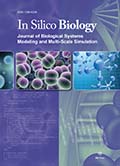Authors: Le Béchec, Antony | Zindy, Pierre | Sierocinski, Thomas | Petritis, Dimitri | Bihouée, Audrey | Le Meur, Nolwenn | Léger, Jean | Théret, Nathalie
Article Type:
Research Article
Abstract:
Microarray technology is a widely used approach to gene expression analysis. Many tools for microarray management and data analysis have been developed, and recently new methods have been proposed for deciphering biological pathways by integrating microarray data with other data sources. However, to improve microarray analysis and provide meaningful gene interaction networks, integrated software solutions are still needed. Therefore, we developed M@IA, an environment for DNA microarray data analysis allowing gene network
…reconstruction. M@IA is a microarray integrated application which includes all of the steps of a microarray study, from MIAME-compliant raw data storage and processing gene expression analysis. Furthermore, M@IA allows automatic gene annotation based on ontology, metabolic/signalling pathways, protein interaction, miRNA and transcriptional factor associations, as well as integrative analysis of gene interaction networks. Statistical and graphical methods facilitate analysis, yielding new hypotheses on gene expression data. To illustrate our approach, we applied M@IA modules to microarray data taken from an experiment on liver tissue. We integrated differentially expressed genes with additional biological information, thus identifying new molecular interaction networks that are associated with fibrogenesis. M@IA is a new application for microarray management and data analysis, offering functional insights into microarray data by the combination of gene expression data and biological knowledge annotation based on interactive graphs. M@IA is an interactive multi-user interface based on a flexible modular architecture and it is freely available for academic users at http://maia.genouest.org.
Show more
Keywords: Microarray, database, systems biology, KEGG, gene ontology
Citation: In Silico Biology,
vol. 8, no. 1, pp. 63-69, 2008
Price: EUR 27.50





